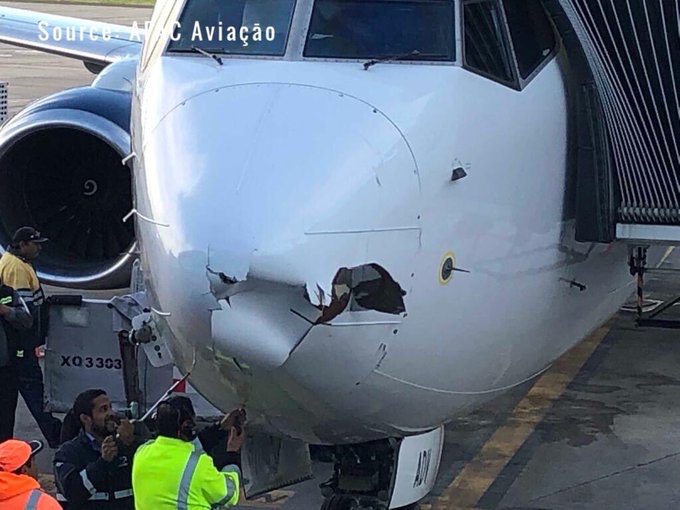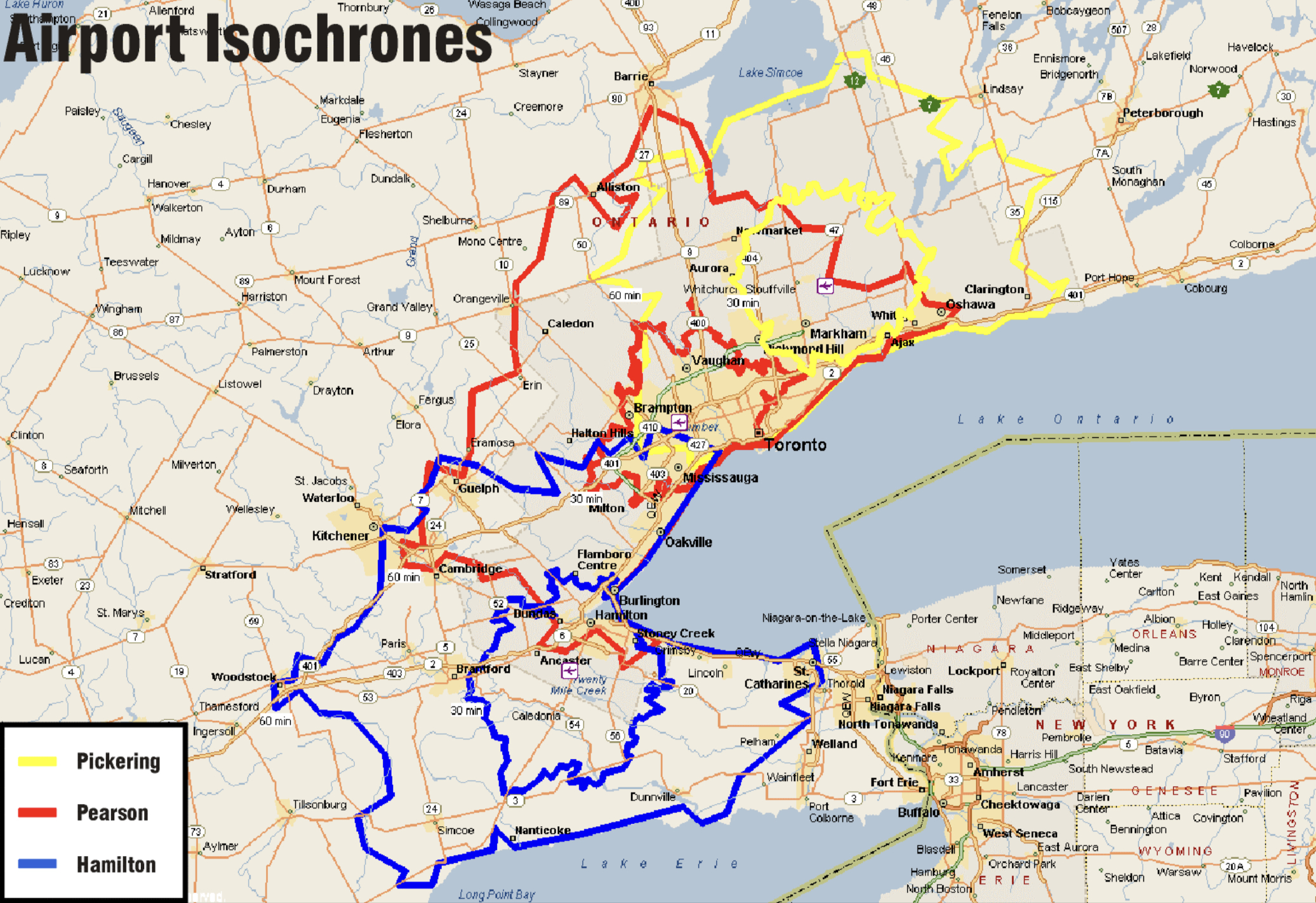Between December 19 to 21, 2018 near London, England, a series of drone sightings over Gatwick airport caused a major travel disruption. The event affected over 140,000 travelers and cancelled 1000 flights over 3 days at the height of the holiday season. Whether this was terrorism or the malicious act of a few individuals, it is clear that the intent was to disrupt the operation of a major commercial airport at a key travel time of the year.

What will happen when (not if) a mischievous drone operator decides to have some fun in Toronto? Toronto Pearson International Airport handles approximately 30 percent of the enplaned-deplaned aviation passengers in Canada. The events at the height of the 2018 holiday season at Gatwick Airport, near London England, are a dramatic reminder of how vulnerable civil aviation is to disruption. According to British Security Minister Ben Wallace, there is no easy solution.
“The huge proliferation of such devices, coupled with the challenges of deploying military countermeasures into a civilian environment, means there are no easy solutions,” Wallace said.
Fortunately for London, it is served by half a dozen jet airports providing regular passenger services. When drones intentionally shut down Gatwick, travelers rebooked on flights out of nearby Heathrow, Standsted , Luton, London City, and Southend airports. Ryanair responded to the disruption by redirecting all of their Gatwick bound flights to London Standsted instead, and then briefly operating from Stansted.
But what happens when a Gatwick style drone disruption hits Toronto Pearson airport? Will Toronto be as resilient? Will it be able to choose safety over economic interests? Like Gatwick, Pearson’s runway capacity under IMC (Instrument Metrological Conditions) is strained. Even a short disruption lasting a few hours can cause chaos. For instance, a three-hour shutdown of Pearson airport would delay hundred flights. Combined with Pearson’s limited runway capacity in IMC conditions this is enough to create an unrecoverable backlog forcing those flights to be canceled outright.
The 2013 ice storm, the worst storm to hit Pearson in 20 years, shut the airport down for over a day. What if this disruption lasts three days, as it did in Gatwick? Could arriving flights go elsewhere? Could Air Canada operate its jets from another nearby airport as Ryanair did?
In past disruptions Air Canada has diverted flights to Buffalo and Ottawa, both hours away by road. Unlike London, Toronto has only one easily accessible jet airport, Pearson International. There is Hamilton airport (over an hour away, a $200 taxi fare to downtown Toronto) which can take a few jets, but it does not have the logistics (passenger terminal, fuel pipeline or rail links) to be able to handle anything of significance.
Toronto’s General Aviation airports, Oshawa, Buttonville, or Billy Bishop City Centre are restricted from handling passenger jets by either the laws of man (like Billy Bishop’s jet ban) and or the laws of physics thanks to their short runways. These airports all have runways built before the Jet-age and are thousands of feet too short to safely handle a Boeing 737 in an emergency. They also have no ability to expand. Unfortunately, unlike other cities of Toronto’s size that have two or three accessible passenger jet airports, Toronto has only one, Pearson International Airport.
Pearson is run by a not-for-profit corporation named the GTAA (Greater Toronto Airports Authority). Despite the name, the GTAA runs only one airport and has no plans for any additional airports or runways. Not only does the GTAA have no plans to increase Toronto’s jet runway capacity or redundancy, page 47 of its 2017-2037 Draft Master Plan calls for stuffing 20% more aircraft onto the limited resources it currently has. It even expects one of Pearson’s runways (23-05) to handle 48 aircraft per hour, 17 hours a day, in IMC conditions. It’s a grand real-life experiment to squeeze more jet aircraft per hour onto a runway in IMC than any other snowbelt international airport in North America.

Over the years, Transport Canada, and both Conservative and Liberal federal governments have raised the capacity issue. The GTAA, and its main tenant, Air Canada, have successfully lobbied to maintain a Toronto Passenger jet monopoly. Only Porter airlines, utilizing turboprops out of the non-jet capable Billy Bishop airport has been able to drive a small wedge into this monopoly.
In 2002-2006 the GTAA (with great reluctance after multiple prods from Transport Canada) tabled a vision of what a robust three jet airport Toronto would look like. This vision includes a robust Hamilton Airport and a new jet airport in Pickering on land already set aside for this purpose. But instead its monopoly has been allowed to continue to dominate Toronto aviation, creating a uniquely fragile economic choke point.
Today Toronto’s booming growth, building jet aircraft traffic and the relentless advance of drone technology is creating a perfect storm. In the near future,Toronto’s aviation choke point will be tested, the question is simply when and how the GTAA, and its main tenant Air Canada, will respond.
Take the disruption caused by the worst winter storm, the 2013 ice storm, to hit Pearson in 20 years, and put its power in the hands of a disgruntled teenager with a drone. Now imagine this level of reduced safety, economic losses and travel disruption caused by a single drone operator whenever he wants to have some fun.
In the decade it takes to build and open additional capacity, specialists from our police, military and Transport Canada need to put resources in place to protect the traveling public from drone created disruptions. The Regulatory work has already started.
It is time for our federal government to show leadership, to push the GTAA monopoly aside, and to address Toronto’s aviation congestion and fragility.
It is time to build Pickering Airport.
The time has come. Let’s get this done.
A PICKERING Resident.
Except that the GTAA has blown all its money into a badly designed terminal 1. There are plans to twin 23 but see comment 1. The GTAA is also beggaring the government for money to alter the ground side plans for accommodating the Collenette HSR plan. There is no doubt that there is bad blood between AC and the GTAA over this including lawsuits. So good luck with Pickering. HAHAHA!!!
The GTAA will not be building Pickering, they have been lobbying against if for years as they do not want the competition. It is expected that a new Pickering Airport Authority will, utilizing a P3 ( public private partnership ) and private investors.
Its time for our politicians to plan for the future and get this process on its way. Start the Pickering project now!